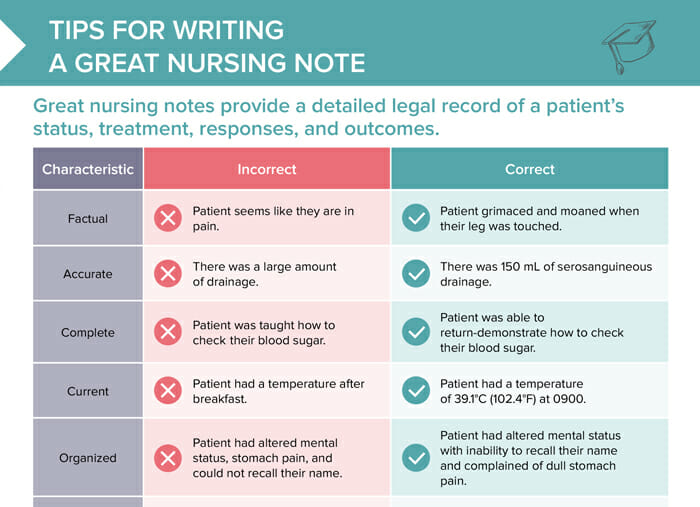What is charting in nursing?
Charting in nursing is the systematic documentation of a patient’s medical history, care provided, observations, interventions, responses, and any other important information around their care. It forms an integral part of the medical record.
What are medical records?
Medical records, often referred to as health records or medical charts, are systematic documentation of a patient’s medical history and care over time.
Many medical records have transitioned from paper-based systems to Electronic Health Records (EHRs), which offer greater accessibility, interoperability, and efficiency.
Medical record template
How medical records are set up varies between facilities. This is an example of what the content outline of a medical record could look like:
Table: Example of a medical record template
| Patient data | Name, age, gender, address, contacts |
| Responsible primary care provider | Contact information |
| Insurance information | Provider and policy |
| Known allergies | Medications, food, environmental |
| Medication plan | With dosage, frequency and indication |
| Medical/surgical and family history | Include relation and dates of diagnosis |
| Social history | Smoking, alcohol, other drugs, occupation and relationships |
| Visit documentation | Date, reason, findings, treatment |
| Lab and imaging results |
How long do medical records need to be kept?
The duration for which medical records need to be saved depends on local regulations, patient age, type of record, and other factors. In general, adult medical records in the United States need to be retained for at least 6–10 years after the last interaction with the patient. For minors, records need to be kept until the patient reaches the age of majority plus the required retention time frame for adults.
Nursing charting systems
Nursing charting systems are methods that nurses can apply to make their patient care documentation more structured and consistent. Examples are:
- Narrative charting: comprehensive and chronological account in full sentences that is good for giving context, but quite time-consuming
- POMR: problem-oriented medical record, organizes all information sorted by patient problems
- SOAPIE charting: follows the template Subjective – Objective – Assessment – Plan – Evaluation, moving from the patient’s subjective feelings to test and exam results, to the nurse’s clinical judgment and the interventions + how the patient responded.
- Focus charting: following patient issues in three steps, data – action – response
- Charting by exception: charting only deviations from the standard or norm
- Checklists: pre-written sets of interventions for specific scenarios that eliminate the need for everything to be written from scratch; the relevant items are only checked off
Nursing charting example
An example of focus charting could look as follows:
Focus: shortness of breath
Date:
Time:
Data: Patient reports difficulty in breathing since morning. Oxygen saturation measured at 88% on room air.
Action: Positioned patient in a high Fowler’s. Administered 2L oxygen through a nasal cannula and provided a nebulizer treatment.
Response: After intervention, the patient’s breathing became less labored to respirations at 18/min, with oxygen saturation increasing to 94%. Patient verbalized relief, stating, “I can breathe easier now.”
Tips for medical records
Tips for writing professional medical records
- Double-check to make sure you have the correct client chart.
- Make sure to use your name/your account when charting.
- Keep your password safe and secure.
- Chart in real time or as soon as possible after taking care of a client.
- Chart facts, such as “the client ambulated 100 steps today.”
- Chart interactions with other healthcare personnel, such as calls to health care providers or orders from the lab.
What to avoid in medical records
- Do not record personal opinions or views, such as “the client needs to lose weight.”
- Do not chart on behalf of other health care personnel.
- Do not share your login information.
- Do not chart ahead of time, as situations can change.
- Do not alter prior charts.
- Do not copy and paste information from other sections in someone’s chart.
- Do not chart interactions that are not relevant to your client care, such as “awaiting voicemail” or “orders pending.”

